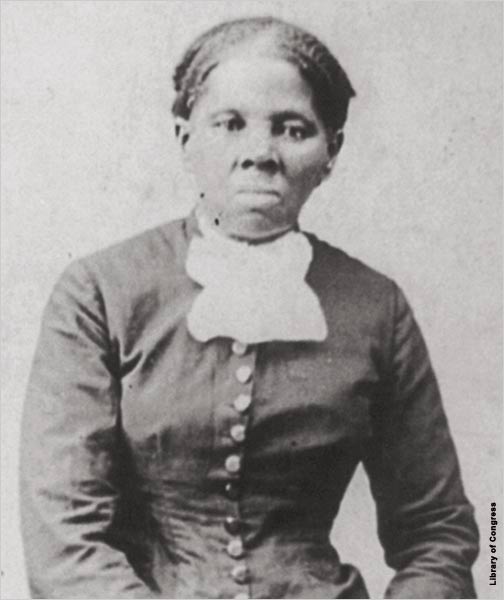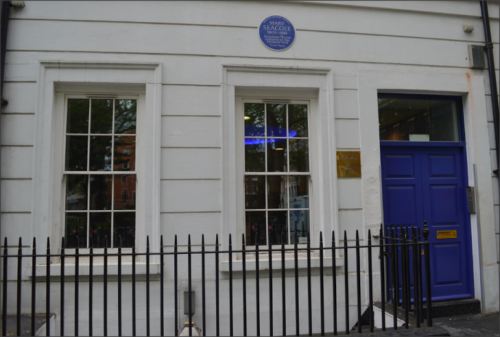
Mary Jane Seacole (1805 – 14 May 1881), née Grant, was a Jamaican-born woman of Scottish and Creole descent who set up a 'British Hotel' behind the lines during the Crimean War.
Which she described as "a mess-table and comfortable quarters for sick and convalescent officers," and provided succour for wounded servicemen on the battlefield. She was posthumously awarded the Jamaican Order of Merit in 1991. In 2004 she was voted the greatest Black Briton[.
She acquired knowledge of herbal medicine in the Caribbean. When the Crimean War broke out, she applied to the War Office to assist but was refused. She travelled independently and set up her hotel and assisted battlefield wounded. She became extremely popular among service personnel who raised money for her when she faced destitution after the war.
After her death, she was forgotten for almost a century, but today is celebrated as a woman who successfully combatted racial prejudice.[ Her autobiography, Wonderful Adventures of Mrs. Seacole in Many Lands (1857), is one of the earliest autobiographies of a mixed-race woman, although some aspects of its accuracy have been questioned. It has been claimed that Seacole's achievements have been exaggerated for political reasons and a plan to erect a statue of her at St Thomas' Hospital, London, describing her as a "pioneer nurse", has generated controversy.] Further controversy broke out late in 2012 over reports of a proposal to remove her from the National Curriculum.

Early life, 1805–1825
Mary Seacole was born Mary Jane Grant in Kingston, Jamaica, the daughter of a Scottish soldier in the British Army and a free Jamaican Creole woman. Seacole's mother was a "doctress", a healer who used traditional Caribbean and African herbal remedies. She ran Blundell Hall, a boarding house at 7 East Street in Kingston and one of the best hotels in all Kingston. Here Seacole acquired her nursing skills. Her autobiography says her early experiments in medicine were based on what she learned from her mother while ministering to a doll, then progressing to pets, before helping her mother treat humans.Seacole was proud of her Scottish ancestry and called herself a Creole, a term that was commonly used in a racially neutral sense or to refer to the children of white settlers. In her autobiography The Wonderful Adventures of Mrs. Seacole, she records her bloodline thus: "I am a Creole, and have good Scots blood coursing through my veins. My father was a soldier of an old Scottish family." Legally, she was classified as a mulatto, a multiracial person with limited political rights. Robinson speculates that she may technically have been a quadroon.
Seacole emphasises her personal vigour in her autobiography, distancing herself from the contemporary stereotype of the "lazy Creole", She was proud of her black ancestry, writing, "I have a few shades of deeper brown upon my skin which shows me related—and I am proud of the relationship—to those poor mortals whom you once held enslaved, and whose bodies America still owns."

Back in London, 1856–60
Seacole was bankrupt on her return to London. Queen Victoria's nephew Count Gleichen (above) had become a friend of Seacole's in Crimea. He supported fund-raising efforts on her behalf.After the end of the war, Seacole returned to England destitute and in poor health. In the conclusion to her autobiography, she records that she "took the opportunity" to visit "yet other lands" on her return journey, although Robinson attributes this to her impecunious state requiring a roundabout trip. She arrived in August 1856, and considered setting up shop with Day in Aldershot, Hampshire, but nothing materialised. She attended a celebratory dinner for 2,000 soldiers at Royal Surrey Gardens in Kennington on 25 August 1856, at which Nightingale was chief guest of honour.
Reports in The Times on 26 August and News of the World on 31 August indicate that Seacole was also fêted by the huge crowds, with two "burly" sergeants protecting her from the pressure of the crowd. However, creditors who had supplied her firm in Crimea were in pursuit. She was forced to move to 1, Tavistock Street, Covent Garden in increasingly dire financial straits.
The Bankruptcy Court in Basinghall Street declared her bankrupt on 7 November 1856.] Robinson speculates that Seacole's business problems may have been caused in part by her partner, Day, who dabbled in horse trading and may have set up as an unofficial bank, cashing debts.

At about this time, Seacole began to wear military medals. These are mentioned in an account of her appearance in the bankruptcy court in November 1856.] A bust by George Kelly, based on an original by Count Gleichen from around 1871, depicts her wearing four medals, three of which have been identified as the British Crimea Medal, the French Légion d'honneur and the Turkish Order of the Medjidie medal. Robinson says that one is "apparently" a Sardinian award (Sardinia having joined Britain and France in supporting Turkey against Russia in the war).
The Jamaican Daily Gleaner stated in her obituary on 9 June 1881 that she had also received a Russian medal, but it has not been identified. However, no formal notice of her award exists in the London Gazette, and it seems unlikely that Seacole was formally rewarded for her actions in Crimea; rather, she may have bought miniature or "dress" medals to display her support and affection for her "sons" in the Army.
No comments:
Post a Comment